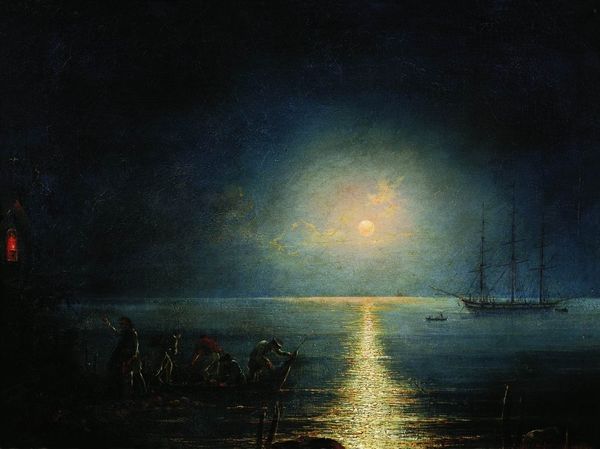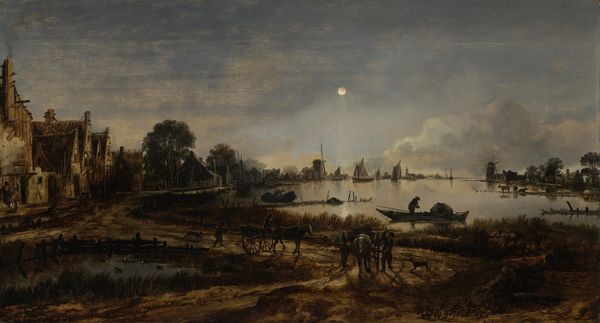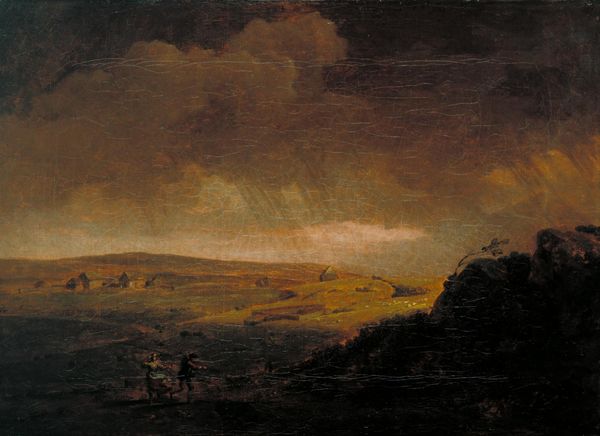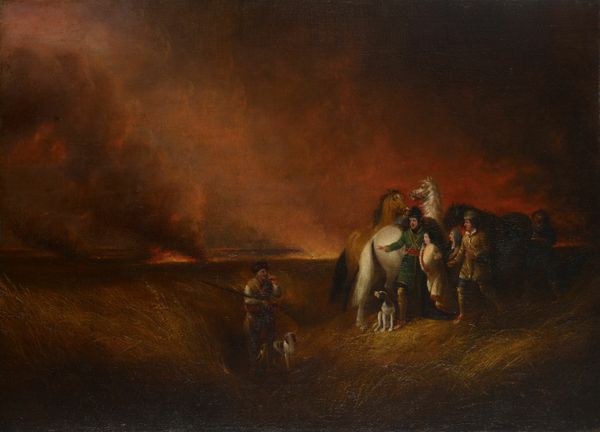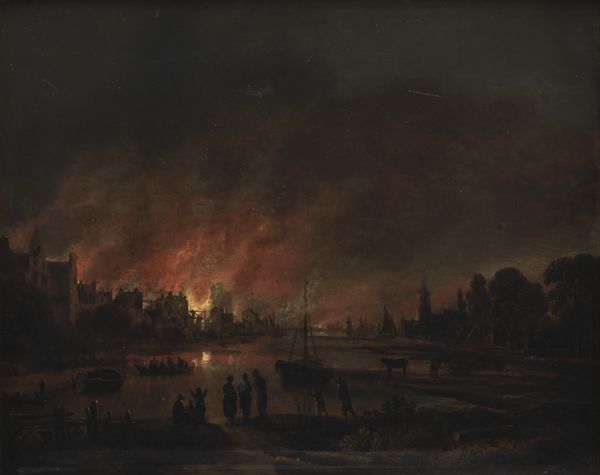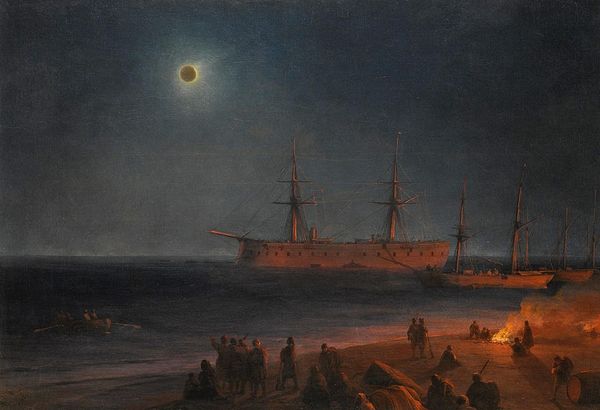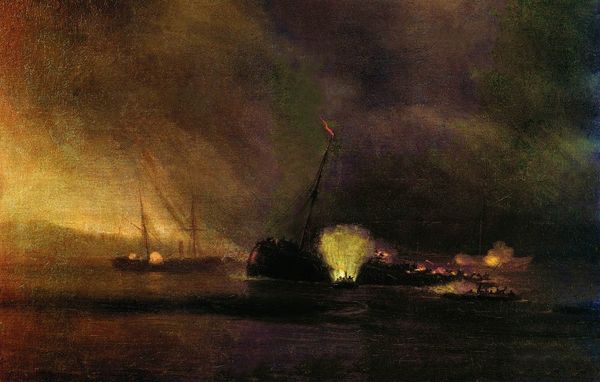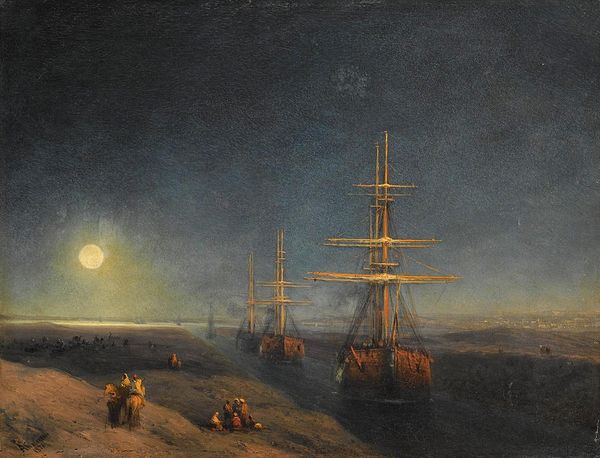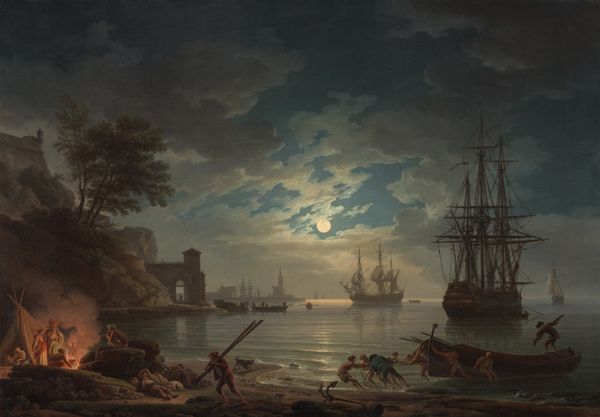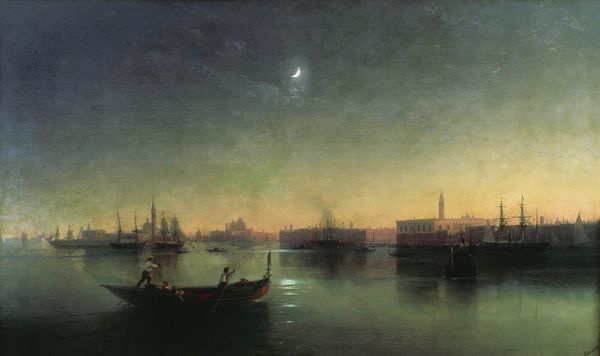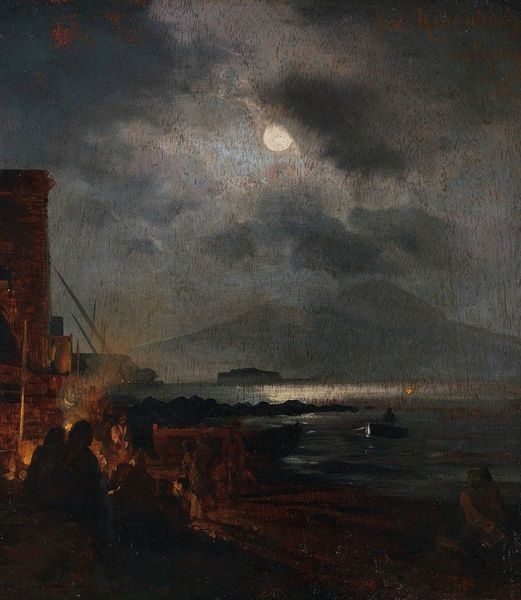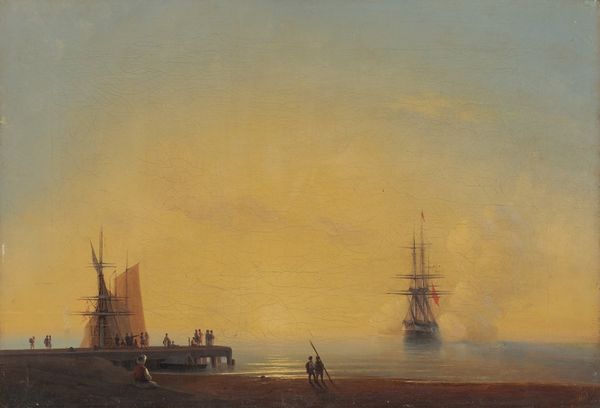
painting, oil-paint
#
night
#
narrative-art
#
painting
#
oil-paint
#
landscape
#
romanticism
#
cityscape
#
history-painting
#
realism
Dimensions: height 47 cm, width 62 cm
Copyright: Rijks Museum: Open Domain
Editor: This is Josephus Augustus Knip's "The Shelling of 's-Hertogenbosch by the French," painted in 1800 using oil paints. The artwork is a night scene and the figures seem to gather around dim light. What catches your attention most about this piece? Curator: Immediately, I'm drawn to how the painting stages power. Consider the context: This piece depicts a historical event. By presenting this shelling at night, Knip does a few things. Firstly, it heightens the drama; war as spectacle. Secondly, and more subtly, the darkness itself becomes a symbol, perhaps alluding to the obscuring of truth or the chaos war brings to social order. Editor: That makes sense. So, the dark atmosphere isn’t just aesthetic. Curator: Precisely. Ask yourself, who is the intended audience here, and what message is Knip trying to convey about the nature of conflict and its impact on the Dutch identity of the time? The choice of subject matter in 1800, during a period of political upheaval in the Netherlands, invites the viewer to reflect on those themes of identity and national pride amidst foreign invasion. How might public displays of art like this have shaped opinion? Editor: I didn't think about it in terms of Dutch identity. Now that you mention it, the way he uses light, to depict figures on what feels like a stage – would that emphasize a specific side of the story? Curator: It could certainly amplify the romantic or tragic aspects, steering viewers toward particular sympathies. Think of Jacques-Louis David's work in Revolutionary France, though different stylistically. These artists were deeply aware of the political power of images. So what might be a message for Dutch audiences, here? Editor: That's fascinating; I’m left wondering about the real history behind this depiction and the extent to which art shaped those perceptions. Curator: Exactly! Considering art within its historical and political setting gives us a richer, more critical understanding of both the artwork and the society that created it.
Comments
rijksmuseum about 2 years ago
⋮
At the request of the Patriots, a French army invaded the Dutch Republic in September 1794. After a siege lasting more than two weeks, ’s-Hertogenbosch was captured on 10 October. The city was shelled –even at night –with cannons set up by the French. To keep out the attackers, a large area around the city was flooded.
Join the conversation
Join millions of artists and users on Artera today and experience the ultimate creative platform.
